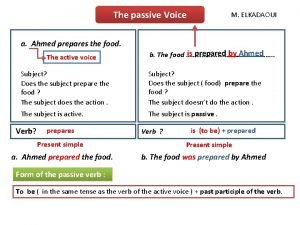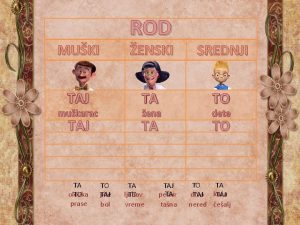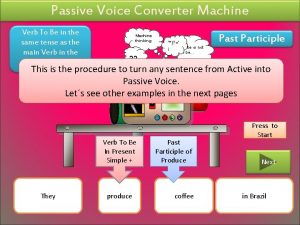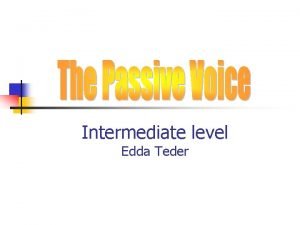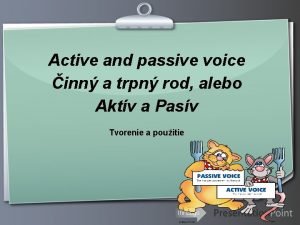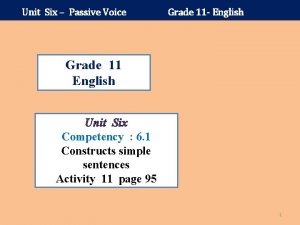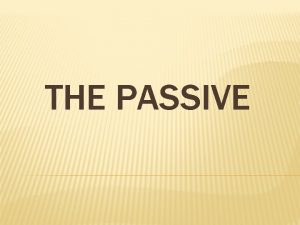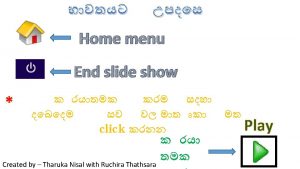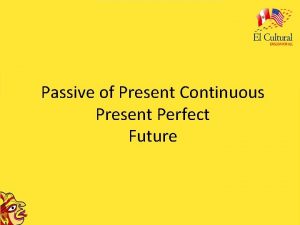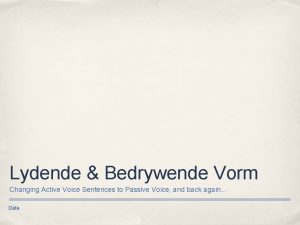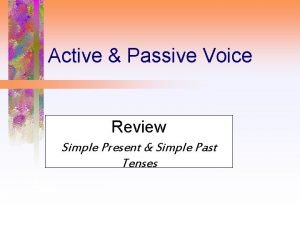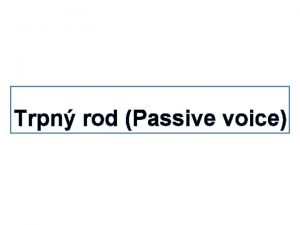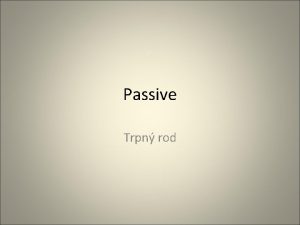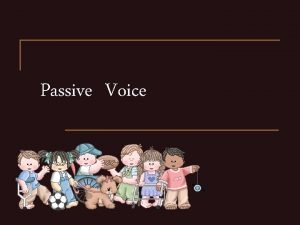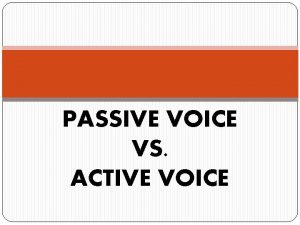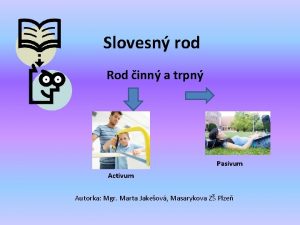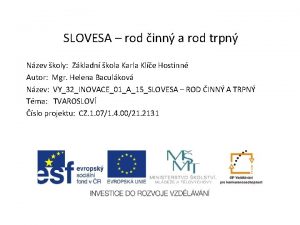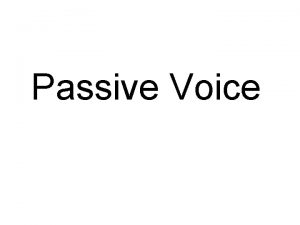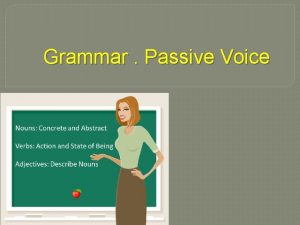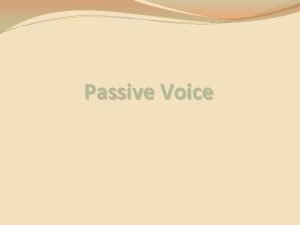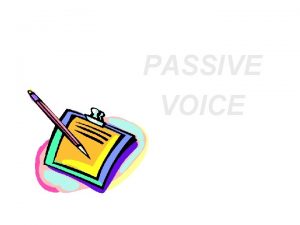Active and passive voice inn a trpn rod














- Slides: 14

Active and passive voice Činný a trpný rod, alebo Aktív a Pasív Tvorenie a použitie Ihr Logo

A sad story… p Last week I found a great apartment. The rent was reasonable. That’s why… Page 2 Your Logo

I decided to throw a party the other night. Page 3 Your Logo

The next day I was thrown out of it! Page 4 Your Logo

Active or passive – aktív alebo pasív p I threw a party the other night. (aktív) význam: I did something. – Niečo som urobil. q I was thrown out of it. (pasív) význam: Something was done to me. – Niečo mi bolo urobené, niečo sa mi stalo. Page 5 Your Logo

Form – tvar: p pasív sa tvorí pomocou slovesa to be - byť (vo príslušnom čase) + minulé príčastie (plnovýznamového slovesa) q The terrorist was arrested early this morning. /bol zatknutý/ q Toyota cars are made in Japan. /sú vyrábané/ q A new class representative will be chosen on Monday. /bude vybratý/ NB Tieto príklady ukazujú, že pasív /trpný rod/ môže byť použitý v ktoromkoľvek čase. Rozhodujúce je sloveso „byť“! V akom čase sa toto sloveso použije, v takom čase je celá trpná veta. Page 6 Your Logo

Let’s review the verb to be – zopakujme si sloveso byť: p The Present Simple Tense – prít. jednod. – AM, IS, ARE p The Present Perfect Tense – predprít. – HAVE BEEN, HAS BEEN p The Past Simple Tense – minulý jednod. – WAS, WERE p The Future Tense – budúci s will – WILL BE Page 7 Your Logo

Do these sentences have the same meaning? – majú tieto vety rovnaký význam? p What’s the difference? – Aký je rozdiel? Page 8 Your Logo

Use – použitie: p Pasív sa častejšie používa v písomnom styku. Znie viac formálne a neosobne, preto sa často využíva v: oznamoch o zločinoch, právnych dokumentoch – He was sentenced to two years in prison. § § novinových článkoch – The match was postponed due to a heavy fog. § vedeckých článkoch – Three millilitres of water are added to the mixture. rôznych vyhláseniach – Flight BA 302 to London is delayed by two hours. § § Page 9 upozorneniach – Customers are requested not to smoke. Your Logo

Use – použitie: p V každodenných situáciách ho používame, keď nevieme, alebo nás nezaujíma, kto je činiteľom deja. Inými slovami, v situáciách, keď sa viac zaujímame o to „ČO SA STALO“ a nie „KTO TO UROBIL“. p A predsa nie je nezvyčajné spomenúť „činiteľa“ v pasívnej vete. V tomto prípade ho spomíname na konci vety po predložke „BY“: q “Great expectations” was written by Charles Dickens. q “Star wars” was directed by George Lucas. Page 10 Your Logo

Practice – cvičenie: p Put the verbs in brackets into the correct passive form – Daj sloveso v zátvorke do správneho pasívneho tvaru: § Shampoo _____ (test) on animals before it ______ (sell) in shops. § This house _____ (build) in the XIX century. § Two missing children _______ (find) safe and well. § A new bridge ______ (construct) next year. Page 11 Your Logo

Practice – the key / kľúč p Put the verbs in brackets into the correct passive form § Shampoo is tested (test) on animals before it is sold (sell) in shops. § This house was built (build) in the XIX century. § Two missing children have been found (find) safe and well. § A new bridge will be constructed (construct) next year. Page 12 Your Logo

Active → Passive – aktív → pasív, krok za krokom Príklad: (aktív) The postman delivers the letters at 09. 00. Krok 1 – identifikuj predmet v aktívnej vete a daj ho na začiatok pasívnej vety. (the letters) Krok 2 – identifikuj gramatický čas slovesa v aktívnej vete a daj sloveso „byť“ do rovnakého času. (are) Krok 3 – premeň plnovýznamové sloveso do tvaru minulého príčastia. (delivered) (pasív) Page 13 The letters are delivered at 09. 00. Your Logo

Thanks for your attention! Page 14 Your Logo
 Passive patterns
Passive patterns Passive voice tenses chart
Passive voice tenses chart Passive voive
Passive voive Muski zenski srednji rod primeri
Muski zenski srednji rod primeri Passive voice converter machine
Passive voice converter machine Past continuous tense passive voice
Past continuous tense passive voice Passive voice cvičenia
Passive voice cvičenia Turn these sentences into the passive
Turn these sentences into the passive Bare passive
Bare passive Active and passive voice comic strip
Active and passive voice comic strip Passive voice past perfect
Passive voice past perfect Present perfect active and passive
Present perfect active and passive What does lydende vorm mean
What does lydende vorm mean Grow simple present passive
Grow simple present passive Louise made the chocolate cake.
Louise made the chocolate cake.

